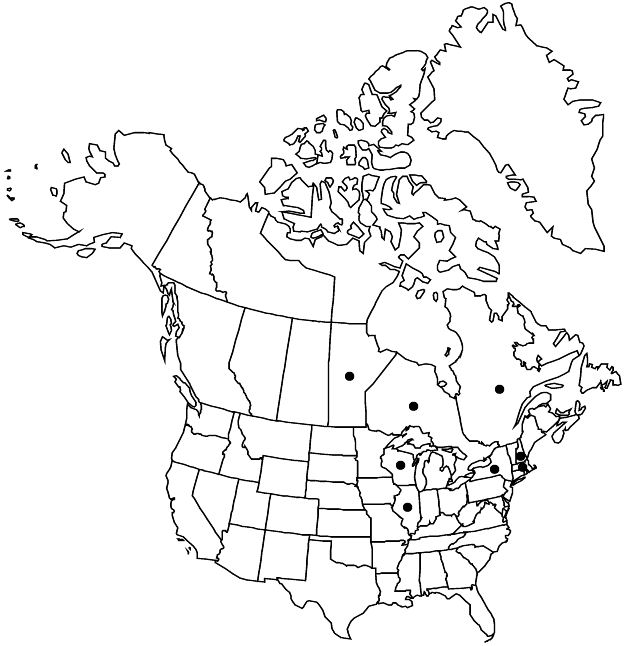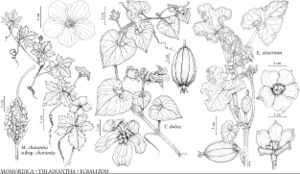Thladiantha dubia
Enum. Pl. China Bor., 29. 1833.
Leaf blades 5–10 × 4–9 cm, base cordate, apex short-acuminate, surfaces hirsutulous. Inflorescences: peduncle 5–15 mm. Flowers: hypanthium 2–4 mm; sepals recurving, 12–13 mm; petals ca. 25 mm, apex acute. Pepos 4–5 cm, surface with 10 obscure furrows. 2n = 18.
Phenology: Flowering Jun–Sep.
Habitat: Roadsides, thickets, pastures, waste places
Elevation: 10–200 m
Distribution

Introduced; Man., Ont., Que., Ill., Mass., N.H., N.Y., Wis., Asia (China, Russia), introduced also in South America (Ecuador), Europe, elsewhere in e Asia (China, Japan), Pacific Islands (Galapagos Islands).
Discussion
Thladiantha dubia is characterized by its ovate-cordate, unlobed leaves; relatively large, solitary flowers with narrow, recurving sepals, campanulate corollas, yellow petals, usually with recurving apices; and pendulous, hirsute-villous, orange-red fruits. It is grown as an ornamental, especially for its large, bell-shaped flowers and brightly colored fruits. Few populations are apparently outside of cultivation at present, but even staminate plants are potentially invasive because of the spread by tubers.
Selected References
None.
